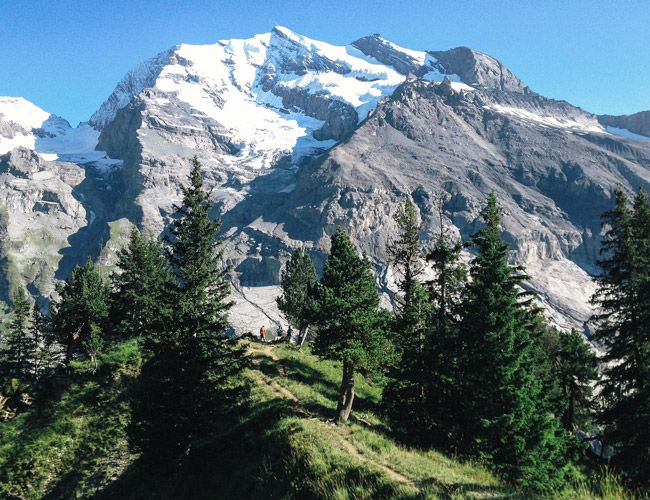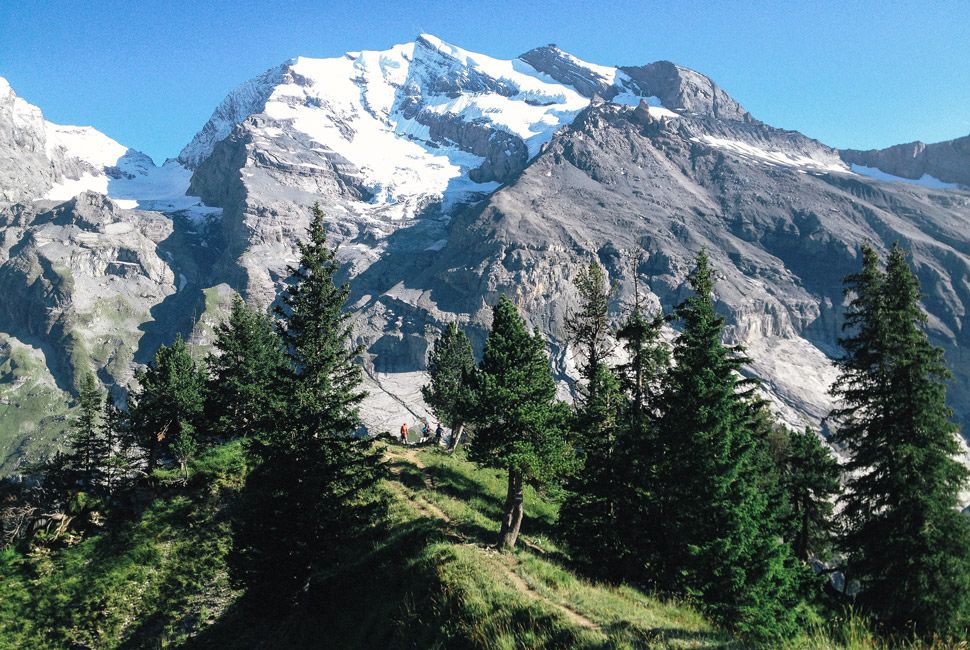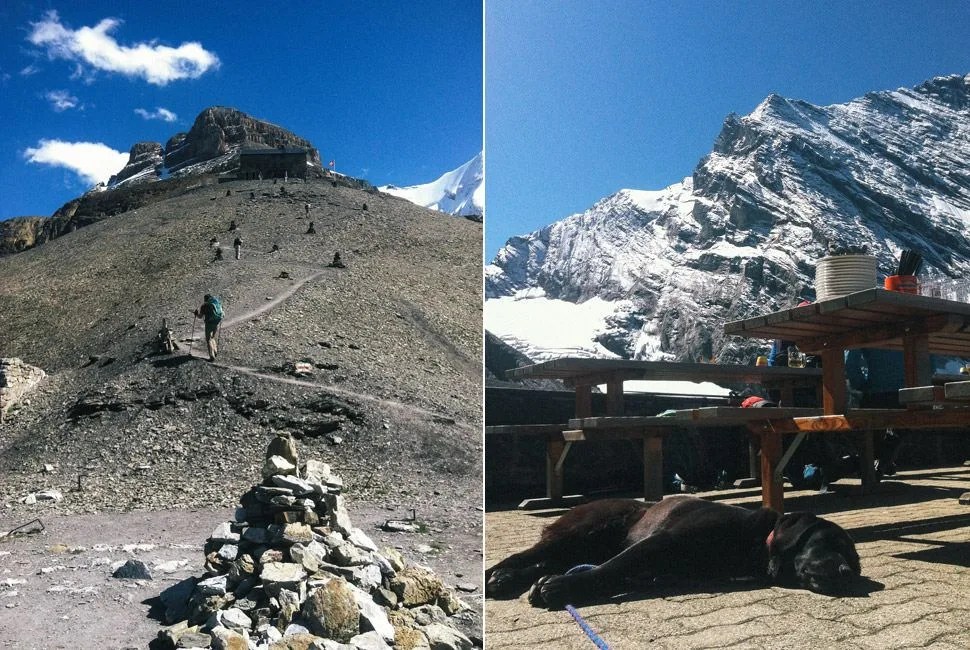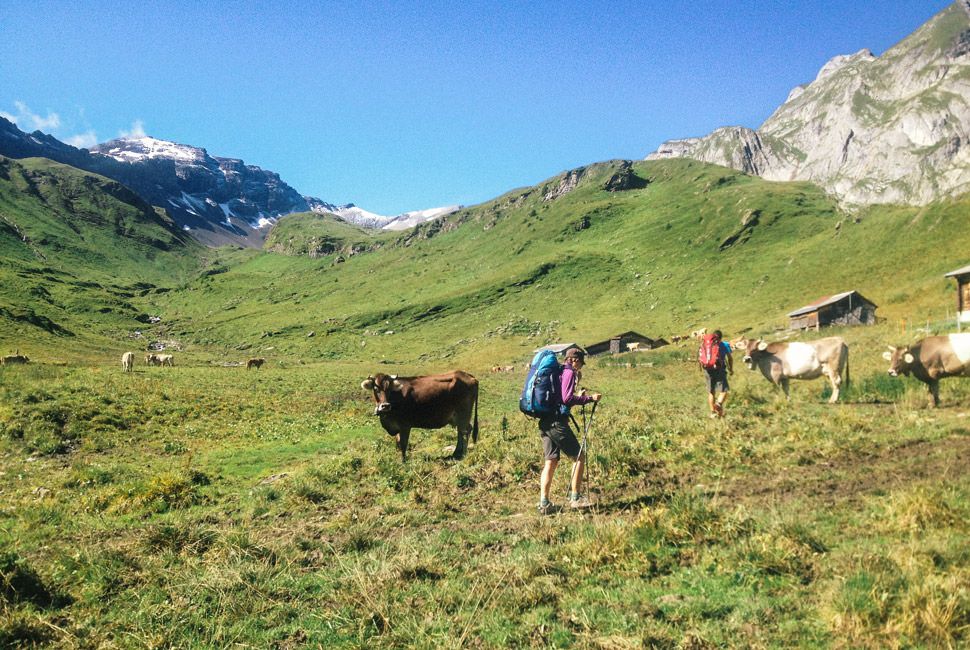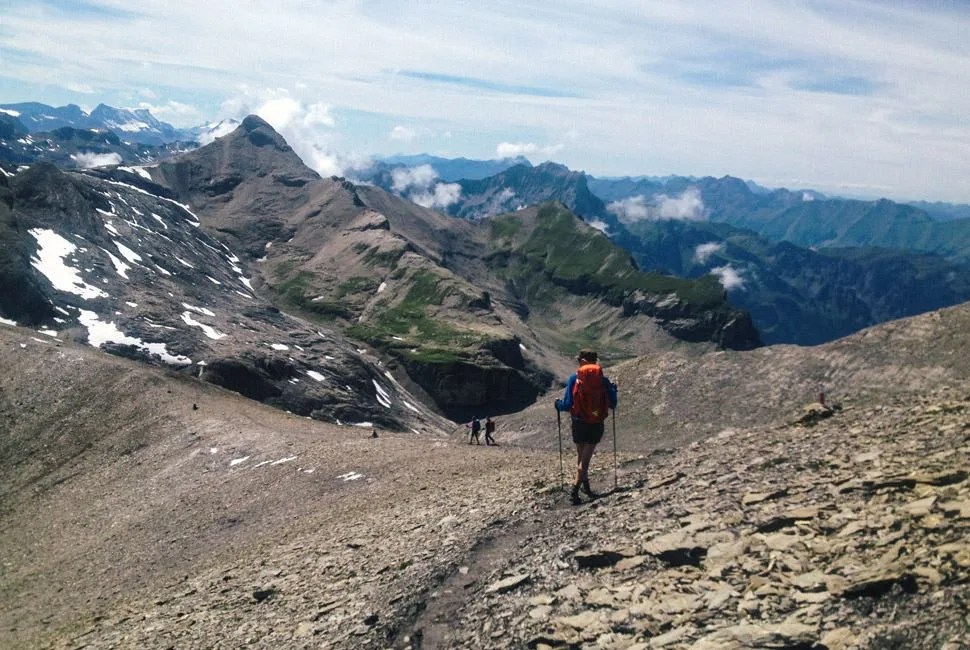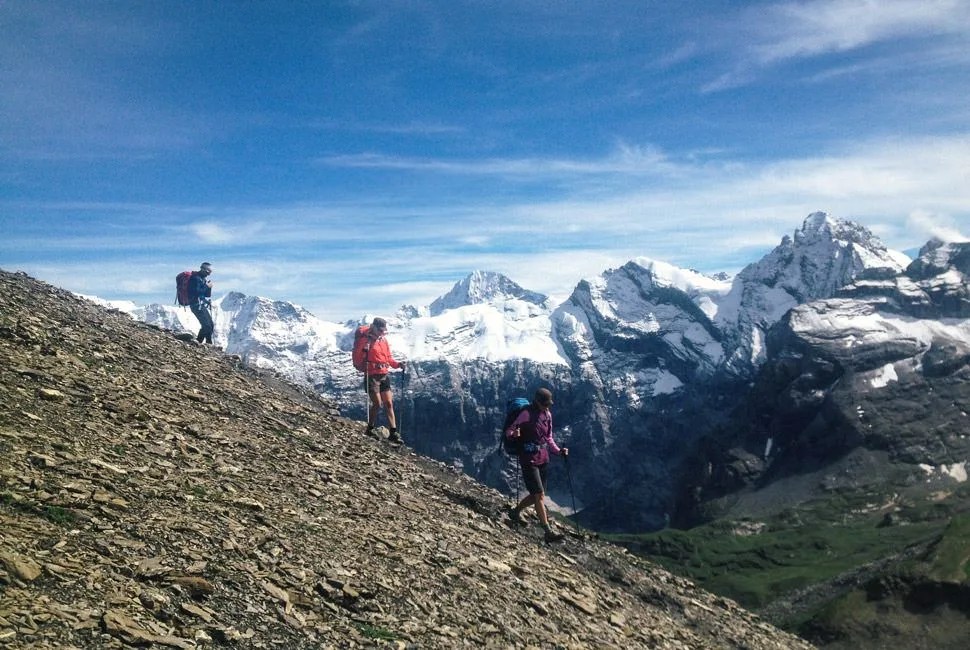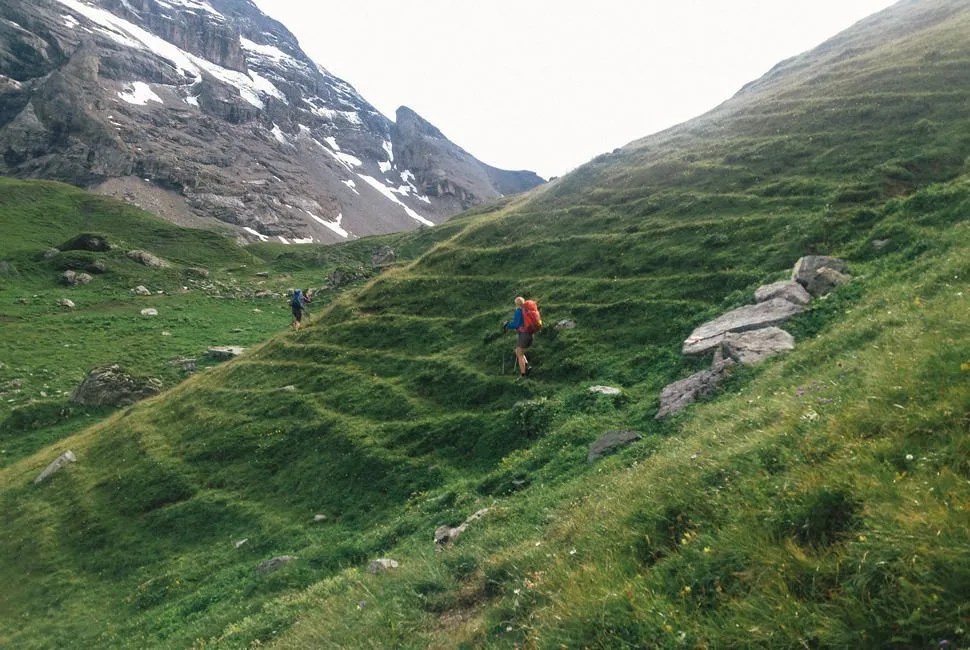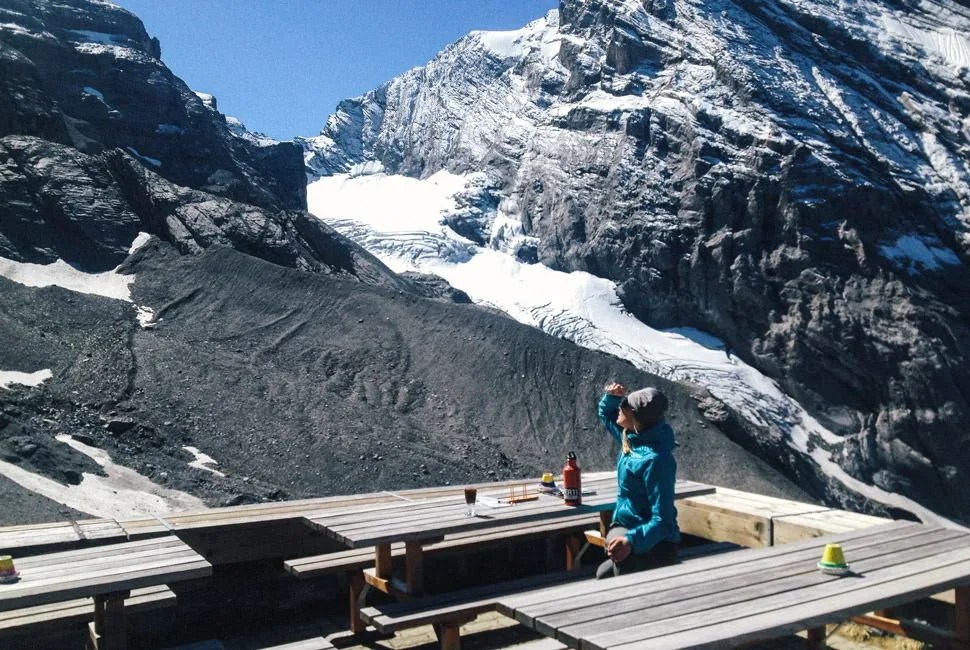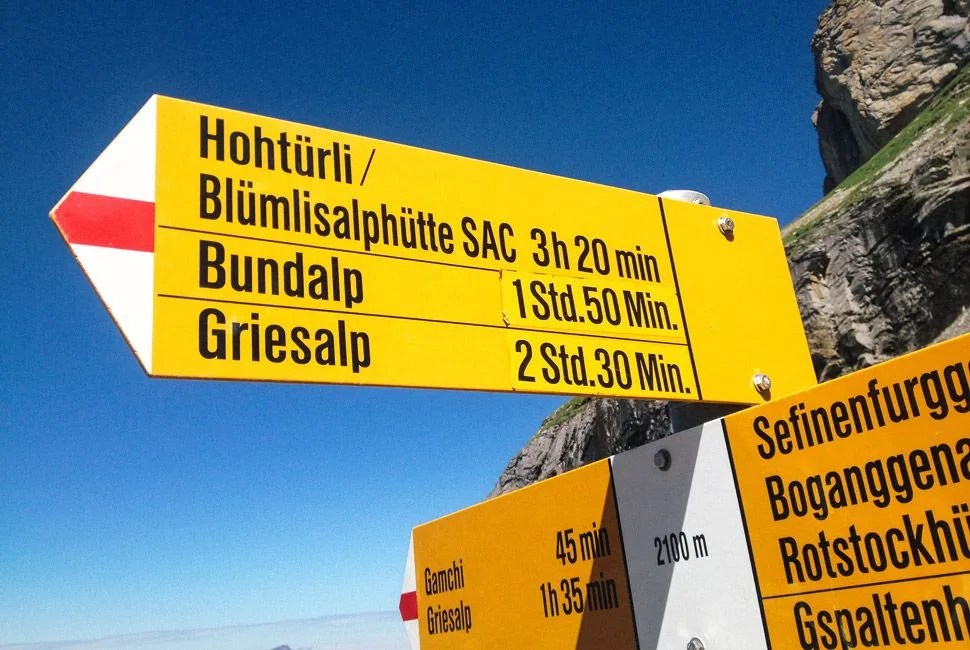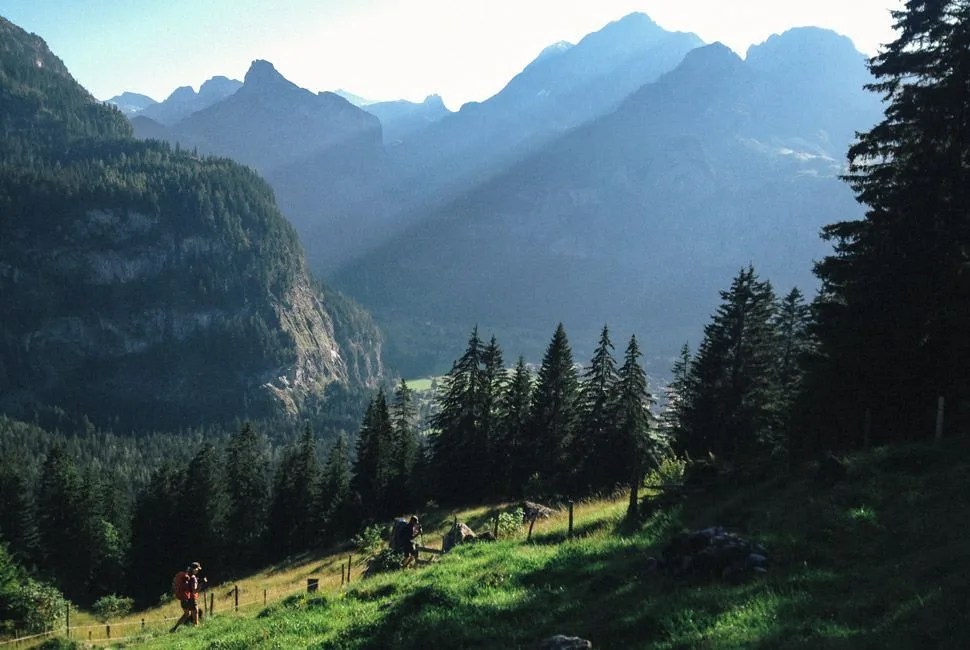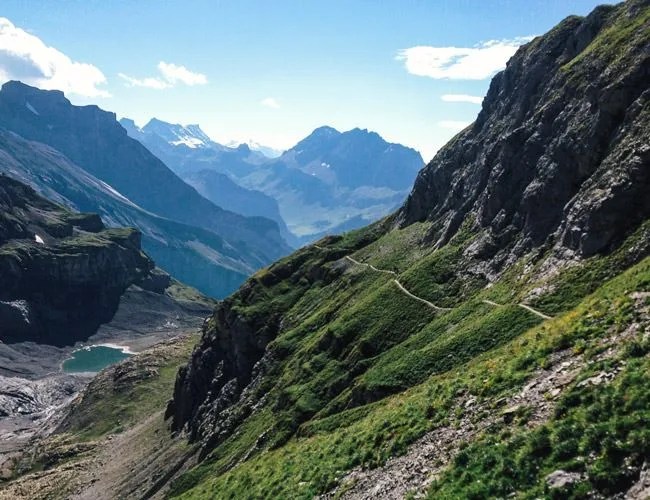10 photos
Hilary and I wandered a grassy meadow at 7,500 feet near a dried-up mountain lake called Hundssee, searching for a spot to lay out our sleeping bags and bivy sacks. The wind had picked up in the evening, driving a stiff, cold breeze from the west at about 25 mph. For several minutes, we looked for a small site that was out of the wind, somewhat flat, and hadn’t been dumped on by a cow. In the end, we settled. Our “bedroom” for the night would have a majestic view of the sun’s last rays washing over the snowy west faces of the Eiger, Mönch, and Jungfrau — but we would have a cow pie 12 inches from our heads, and another cow pie 12 inches from our feet.
“Be careful if you get up in the night,” I said to Hilary, also reminding myself. The best view in the world isn’t so great if you find yourself ankle-deep in poop at midnight.

Dan had mentioned his novel idea before our summer trip to Switzerland: we’d go backpacking, in the Alps — no huts. Bring your sleeping bags and bivy sacks, he said. Brilliant, I thought.
No huts meant not sharing a bunkroom with 12 other people, which meant no waking up in the night listening to strangers snore, no breathing the humid international farts of those strangers, no one getting up at 3 a.m. to use the bathroom and making noise as they exited and re-entered the bunkroom. We would save $78 per person per night; my inner dirtbag rejoiced. We could make whatever food we wanted for dinner, and for breakfast, and most importantly, we could sleep anywhere we wanted. We would simply roll our sleeping bags out somewhere with an incredible view and go to sleep with the stars just above our heads. How wonderful!
The Swiss Alpine Club operates more than 150 mountain huts with a total of more than 9,000 beds. There are many reasons people choose to use Swiss huts instead of camping, including, but not limited to:
